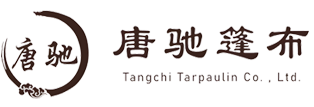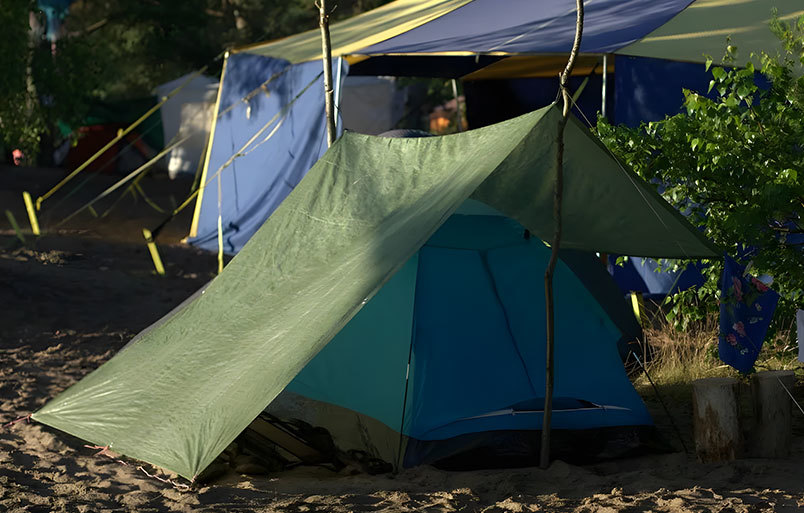The Versatile World of Coated Banners: Applications and Benefits in the Textile Industry
Oct 16,2025
Coated banners have gained immense popularity in various sectors, including the textile industry. These banners are created using a base fabric that is coated with a layer of polymer or vinyl, enhancing their durability and versatility. In the context of chemical fibers, coated banners play a crucial role in expanding the functionality and application of these materials.
One of the primary benefit

Coated banners have gained immense popularity in various sectors, including the textile industry. These banners are created using a base fabric that is coated with a layer of polymer or vinyl, enhancing their durability and versatility. In the context of chemical fibers, coated banners play a crucial role in expanding the functionality and application of these materials.
One of the primary benefits of coated banners is their weather resistance. The durable coating protects the underlying fabric from environmental elements such as UV rays, moisture, and pollutants. This characteristic makes them ideal for outdoor advertising, trade shows, and events where longevity and visual appeal are crucial. Coated banners maintain their vibrant colors and structural integrity over time, ensuring that they deliver consistent messaging to audiences.
In addition to outdoor applications, coated banners are also widely used in indoor settings. They can be found in retail spaces, exhibitions, and corporate environments, serving as effective promotional tools. The smooth surface of coated banners allows for high-quality printing, producing sharp and eye-catching graphics that attract customers. This feature is especially important in the competitive textile industry, where visual appeal can significantly influence consumer choices.
Coated banners made from chemical fibers are not only functional but also customizable. The coating process allows for different finishes and textures, enabling businesses to choose the perfect look and feel for their brand. Whether it's a glossy finish for a vibrant display or a matte finish for a more subdued aesthetic, coated banners can be tailored to meet specific marketing needs.
Moreover, they offer a sustainable option in the textile industry. Many coated banners are produced using recyclable materials, contributing to eco-friendly practices. This aligns with the growing consumer demand for sustainable products and encourages businesses to adopt greener solutions in their advertising strategies.
Another advantage of coated banners is their lightweight nature. This feature facilitates easy transportation and installation, making them an ideal choice for events and trade shows. Businesses can easily set up and dismantle their displays, saving time and labor costs.
In conclusion, coated banners represent a fusion of durability, flexibility, and aesthetic appeal, making them an invaluable asset in the textile industry, particularly within the realm of chemical fibers. Their weather resistance, customization options, and eco-friendly aspects enhance their appeal for businesses looking to make a significant impact. By leveraging the advantages of coated banners, companies in the textile sector can elevate their marketing strategies and effectively engage their target audience. Whether for outdoor promotions or indoor displays, coated banners are a versatile solution for modern marketing needs.
One of the primary benefits of coated banners is their weather resistance. The durable coating protects the underlying fabric from environmental elements such as UV rays, moisture, and pollutants. This characteristic makes them ideal for outdoor advertising, trade shows, and events where longevity and visual appeal are crucial. Coated banners maintain their vibrant colors and structural integrity over time, ensuring that they deliver consistent messaging to audiences.
In addition to outdoor applications, coated banners are also widely used in indoor settings. They can be found in retail spaces, exhibitions, and corporate environments, serving as effective promotional tools. The smooth surface of coated banners allows for high-quality printing, producing sharp and eye-catching graphics that attract customers. This feature is especially important in the competitive textile industry, where visual appeal can significantly influence consumer choices.
Coated banners made from chemical fibers are not only functional but also customizable. The coating process allows for different finishes and textures, enabling businesses to choose the perfect look and feel for their brand. Whether it's a glossy finish for a vibrant display or a matte finish for a more subdued aesthetic, coated banners can be tailored to meet specific marketing needs.
Moreover, they offer a sustainable option in the textile industry. Many coated banners are produced using recyclable materials, contributing to eco-friendly practices. This aligns with the growing consumer demand for sustainable products and encourages businesses to adopt greener solutions in their advertising strategies.
Another advantage of coated banners is their lightweight nature. This feature facilitates easy transportation and installation, making them an ideal choice for events and trade shows. Businesses can easily set up and dismantle their displays, saving time and labor costs.
In conclusion, coated banners represent a fusion of durability, flexibility, and aesthetic appeal, making them an invaluable asset in the textile industry, particularly within the realm of chemical fibers. Their weather resistance, customization options, and eco-friendly aspects enhance their appeal for businesses looking to make a significant impact. By leveraging the advantages of coated banners, companies in the textile sector can elevate their marketing strategies and effectively engage their target audience. Whether for outdoor promotions or indoor displays, coated banners are a versatile solution for modern marketing needs.
Hot Tags:
PREVIOUS:
Related Posts
Contact Us
E-mail:
tangchitarpaulin@gmail.com
WhatsApp:
Address:
500 meters west of the highway intersection in Xinxing Industrial Park, Yuanshi County, Hebei Province






